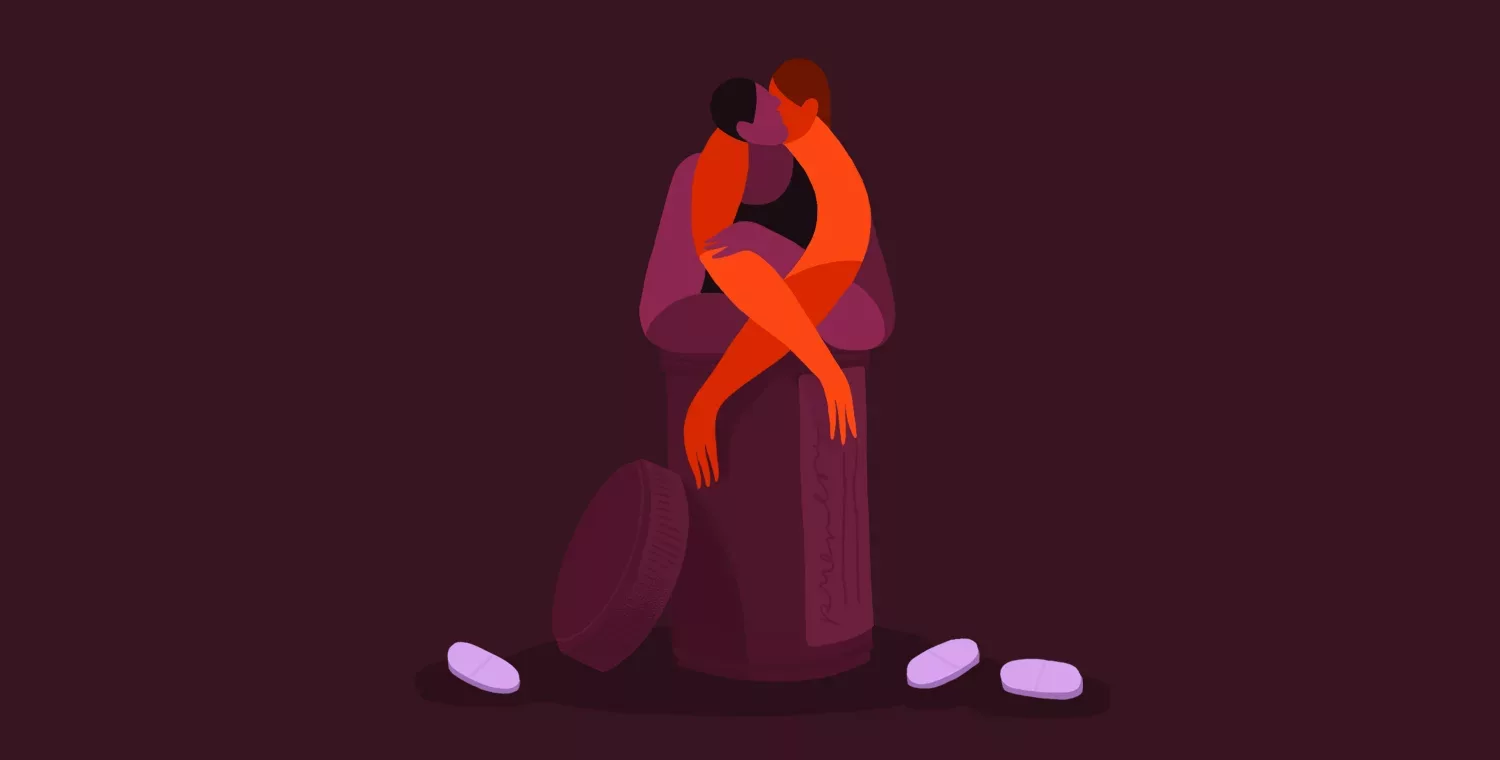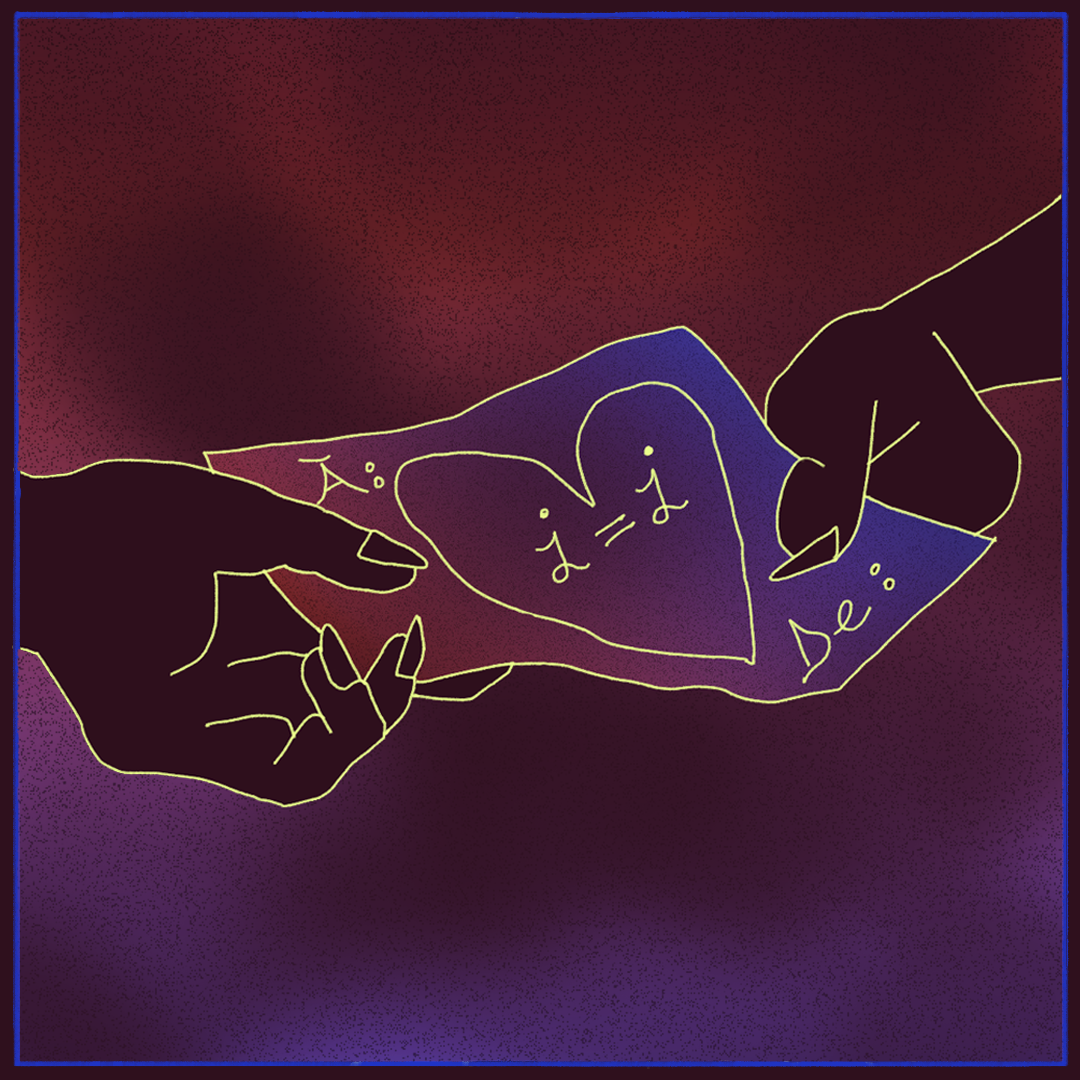Your cart is currently empty!

PrEP: A Two-Sided Holy Grail
The last time I got tested at the clinic in the Quartier Latin, I became the “Carmen Sandiego of the crotch” as I took advantage of the fact that I had a live doctor at my disposal to ask a few questions about the state of Quebecers’ sexual health. Yeah I know, I’m a bit of a keener, so sue me.
Lying on my side, bare-assed like a seal stranded on a beach, Q-tip inserted in my derrière, I shamelessly asked away. The doctor was so profesh, I felt reeeaaally relaxed.
I was mainly interested in the gay community’s health since the commercialization of PrEP. Now, I can already see you squinting in puzzlement after reading this term, which looks like a new element in the periodic table. So here’s a little “scientific” digression, just for you. Don’t worry, it won’t be too long, I swear on Marie-Antoinette’s head. Ready? Ok let’s go!
An exceptional antiretroviral drug for HIV-negative people
For those of you who don’t know, PrEP (pre-exposure prophylaxis) is often referred to, by the general population, as the “pill that prevents you from getting HIV. Except it’s more nuanced than that!
More specifically, PrEP is an antiretroviral. “A whaaaa?”, you ask? It’s a drug that prevents the replication of a virus by blocking some of its stages. More specifically, “the molecules of the antiretroviral block the virus’ attempt to attack white blood cells, which it uses to replicate itself. Keep in mind that white blood cells exist to protect you against infections. HIV works to destroy white blood cells, a process which PrEP blocks or works against” (REZO, n.d.).
Basically, because HIV sabotages your immune system, a bit like how protective walls get knocked down during a war, PrEP works to block the mean little soldiers before they can even attempt to bring down those walls.
For this process to work effectively, it’s necessary to take the treatment before exposure to reduce the risk of contracting HIV.
It sounds like magic, and it kind of is, but it’s not miraculous. PrEP “is an additional tool used to prevent HIV for HIV-negative dans un contexte de relations sexuelles à risque ». individuals” (REZO, n.d.) in the context of risky sex. By risky sex, we mean unprotected (without a condom) anal or vaginal sex with partners whose current HIV status is unknown.
PrEP is a pill that can either be taken at the same time daily, or taken intermittently. Currently in Canada, the only prescription PrEP drug is Truvada.
Note that PrEP is not available over the counter; you need a doctor’s prescription to get it. To date, the effectiveness rate of PrEP demonstrated by clinical studies varies between 86% and 99%.
Once on PrEP, you must be seen by a doctor once every three months (or as often as your doctor recommends) in order to renew your prescription, get screened, and evaluate the unwanted side effects of being on PrEP (e.g. dizziness, headache, stomach ache, diarrhea, etc.).
So, no, they don’t just give you these great pills and then let you go about your business. You will be supervised throughout your treatment. This “counseling” part of treatment is super interesting and important, since it allows individuals to become aware of the impact of their sexual practices on their health, all through a healthcare professional’s supervision.
PrEP and STBBIs: a surprisingly explosive outcome
End of digression, and back to the Quartier Latin clinic, my pants now pulled back up and my blood filling two vials for sampling.
As a young journalist thirsty for knowledge, I opened up my notebook and asked my doctor if the spread of sexually transmitted infections (STIs) in the gay community had changed since the introduction of PrEP. His answer left me crestfallen.
My doctor points out that since the popularization of PrEP among gay men, there’s been an increase in cases of syphilis and gonorrhea in Quebec.
So how do we explain that? “In fact”, he told me while gesturing for me to open my mouth to take a sample from the back of my throat, “it’s a matter of myth and education.”
He explained that many people who take PrEP feel invincible, as though PrEP protects them against all STIs. As a result, wearing a condom appears optional to them, giving free rein to other types of STIs. On your mark… get set… GONORRHEA PARTY!
On the dating app (more like hookup app) Grindr, which has more than 4.5 million users, people have the option of mentioning on their profile whether or not they’re on PrEP. Users can also display their HIV status on their profiles. These full-frontal features reveal that this app is essentially meant to be used as a hookup tool, but it also empowers users with regards to their sexual health and that of their partner(s).
While PrEP is a major win in the fight against HIV (see, I’m not all killjoy), we have to understand that it’s a complementary strategy for preventing HIV. Unless you know your partner’s sexual health status, wearing a condom is a must.
Alright, I see you begging to ask the question: Justin, is PrEP basically for promiscuous men who want to thread their partners one after the other like beads on a Pandora bracelet?
No, cutie pie! Suppose I fall madly in love with an HIV-positive person who isn’t following any HIV treatment and whose viral load is detectable, and we want to have sex without anxiety, well PrEP is a great way to thwart the risks of transmission and nurture a rewarding intimacy session in the bedroom.
PrEP or no PrEP, the condom stays
I remember having had a Grindr hookup (mea culpa, mom) sometime after I went to the screening clinic. As we began to explore every corner of our mouths with our tongues, and one of his fingers caressing my anus, the little devil whispered in my ear: “I want to penetrate you bareback. Don’t worry, I’m on PrEP.”
Needless to say, I became as stiff as someone’s back after a whole day at La Ronde and immediately started unpacking all my science-y knowledge on him. We then wrapped his pretty prick in a condom and everything went smoothly.
Not that I want to sound like a Government of Canada ad, but… protection always tastes better, honey. Can I get an amen?
-
Agence de la santé publique du Canada. (2017). Rapport sur les infections transmissibles sexuellement au Canada : 2013-2014. https://www.canada.ca/fr/sante-publique/services/publications/maladies-et-affections/rapport-infections-transmissibles-sexuellement-canada-2013-14.html
Arkell, C. (2017). La PrEP au Canada : que savons-nous de la sensibilisation, de l’acceptabilité et de l’utilisation? CATIE. https://www.catie.ca/fr/pdm/printemps-2017/prep-canada-savons-nous-sensibilisation-acceptabilite-utilisation#footnote1_miks62o
Arkell, C. (2019). La prophylaxie post-exposition (PPE). CATIE. https://www.catie.ca/fr/feuillets-info/prevention/prophylaxie-post-exposition-ppe
Arkell, C. et Harrigan, M. (2019). La prophylaxie pré-exposition (PrEP) par voie orale. CATIE. https://www.catie.ca/fr/feuillets-info/prevention/prophylaxie-pre-exposition-ppre
Baeten, J.M., Donnell, D., Ndase, P., et al. (2012) Antiretroviral prophylaxis for HIV prevention in heterosexual men and women. New England Journal of Medicine, 367(5), 399–410. https://doi.org/10.1056/NEJMoa1108524
Blumenthal, J. et Haubrich, R. (2014). Risk compensation in PrEP: An old debate emerges yet again. The virtual mentor, 16(11), 909. https://doi.org/10.1001/virtualmentor.2014.16.11.stas1-1411
Choopanya, K., Martin, M., Suntharasamai, P., et al. (2013). Antiretroviral prophylaxis for HIV infection in injecting drug users in Bangkok, Thailand (the Bangkok Tenofovir Study): a randomised, double-blind, placebo-controlled phase 3 trial. The Lancet, 381(9883), 2083–90. https://doi.org/10.1016/S0140-6736(13)61127-7
Crath, R., A. Gaubinger, and C. Rangel. 2019. “Studying the “Sexuality-Health-Technology Nexus”: A New Materialist Visual methodology.” Culture, Health & Sexuality, 21 (11): 1290–1308. https://doi.org/10.1080/13691058.2018.1558456
Gilead. (2012). U.S. Food and Drug Administration Approves Gilead’s Truvada® for Reducing the Risk of Acquiring HIV. Press Releases. https://www.gilead.com/news-and-press/press-room/press-releases/2012/7/us-food-and-drug-administration-approves-gileads-truvada-for-reducing-the-risk-of-acquiring-hiv
Golub, S.A., Gamarel, K.E et Surace, A. (2017). Demographic Differences in PrEP-Related Stereotypes: Implications for Implementation. AIDS Behavior, 21, 1229-1235. https://doi.org/10.1007/s10461-015-1129-4
Gouvernement du Canada. (2020). Gonorrhée. https://www.canada.ca/fr/sante-publique/services/maladies/gonorrhee.html
Gouvernement du Québec. (2018). Dépistage des infections transmissibles sexuellement et par le sang (ITSS). https://www.quebec.ca/sante/conseils-et-prevention/depistage-et-offre-de-tests-de-porteur/depistage-des-itss/
Gouvernement du Québec. (2017). VIH/SIDA. https://www.quebec.ca/sante/problemes-de-sante/itss/vih-sida/#c1602
Grant, R.M., Lama, J.R., Anderson, P.L. et al. (2010). Preexposure Chemoprophylaxis for HIV Prevention in Men Who Have Sex with Men. New England Journal of Medicine, 363(27), 2587-2599. https://doi.org/10.1056/NEJMoa1011205
Greenwald, Z.R., Maheu- Giroux, M., Szabo, J., et al. (2019). Cohort profile: l’Actuel Pre-Exposure Prophylaxis (PrEP) Cohort study in Montreal, Canada. BMJ Open 2019, 9, e028768. https://doi.org/10.1136/bmjopen-2018-028768
Harrigan, M. (2019). L’usage de la PrEP chez les hommes gbHARSAH : Quel est son impact sur la prévention des ITS? CATIE. https://www.catie.ca/fr/pdm/printemps-2019/usage-prep-chez-les-hommes-gbharsah-quel-son-impact-prevention-its#footnote1_71lnu2p
Hoenigl, M., et al. (2020). Grindr Users Take More Risks, but Are More Open to Human Immunodeficiency Virus (HIV) Pre-exposure Prophylaxis: Could This Dating App Provide a Platform for HIV Prevention Outreach? Clinical Infectious Diseases, 71(1), 135-140. https://doi.org/10.1093/cid/ciz1093
Lee-Foon, N.K., Logie, C.H., Siddiqi, A. et Grace, D. (2020). Exploring young Black gay, bisexual and other men who have sex with men’s PrEP knowledge in Toronto, Ontario, Canada. Culture, Health & Sexuality. https://doi.org/10.1080/13691058.2020.1837958
Ministère de la Santé et des Services sociaux (MSSS). (2019). La prophylaxie préexposition au virus de l’immunodéficience humaine : Guide pour les professionnels de la santé du Québec. https://publications.msss.gouv.qc.ca/msss/fichiers/2018/18-334-02W.pdf
Marrazzo, J.M., Ramjee, G., Richardson, B.A., et al. (2015). Tenofovir-Based Preexposure Prophylaxis for HIV Infection among African Women. New England Journal of Medicine, 372(6), 509–518. https://doi.org/10.1056/NEJMoa1402269
Martin, M., Vanichseni, S., Suntharasamai, P., et al. (2015). The impact of adherence to preexposure prophylaxis on the risk of HIV infection among people who inject drugs. AIDS, 29(7), 819–24. https://doi.org/10.1097/QAD.0000000000000613.
McCormack, S., Dunn, D.T., Desai, M., et al. (2016) Pre-exposure prophylaxis to prevent the acquisition of HIV-1 infection (PROUD): effectiveness results from the pilot phase of a pragmatic open-label randomised trial. The Lancet. 387(10013), 53–60. https://doi.org/10.1016/S0140-6736(15)00056-2
REZO. (s.d.) La PrEP. https://www.rezosante.org/ta-sexualite/prevention/prep/
Sundareshan, V., Mangat, R. et Koirala, J. (2020). Preexposure Prophylaxis for HIV Prevention. StatsPearls. https://www.ncbi.nlm.nih.gov/books/NBK507789/
Tan, D.H.S, et al. (2017). Lignes directrices canadiennes sur les prophylaxies pré-exposition et post-exposition non professionnelle au VIH, CATIE. https://www.catie.ca/sites/default/files/Lignes-directrices-canadiennes-PPrE-PPE-Appendice-1.pdf
Tan, D., Schnubb, A., Lawless, J., et al. (2016). High adherence but modest risk compensation among MSM in a PrEP demonstration project [CAHR Conference].
Thigpen, M.C., Kebaabetswe, P.M., Paxton, L.A., et al. (2012) Antiretroviral preexposure prophylaxis for heterosexual HIV transmission in Botswana. New England Journal of Medicine, 367(5), 423–34. https://doi.org/10.1056/NEJMoa1110711
Van Damme, L., Corneli, A., Ahmed, K., et al. (2012). Preexposure prophylaxis for HIV infection among African women. New England Journal of Medicine, 367(5), 411–22. https://doi.org/10.1056/NEJMoa1110711







